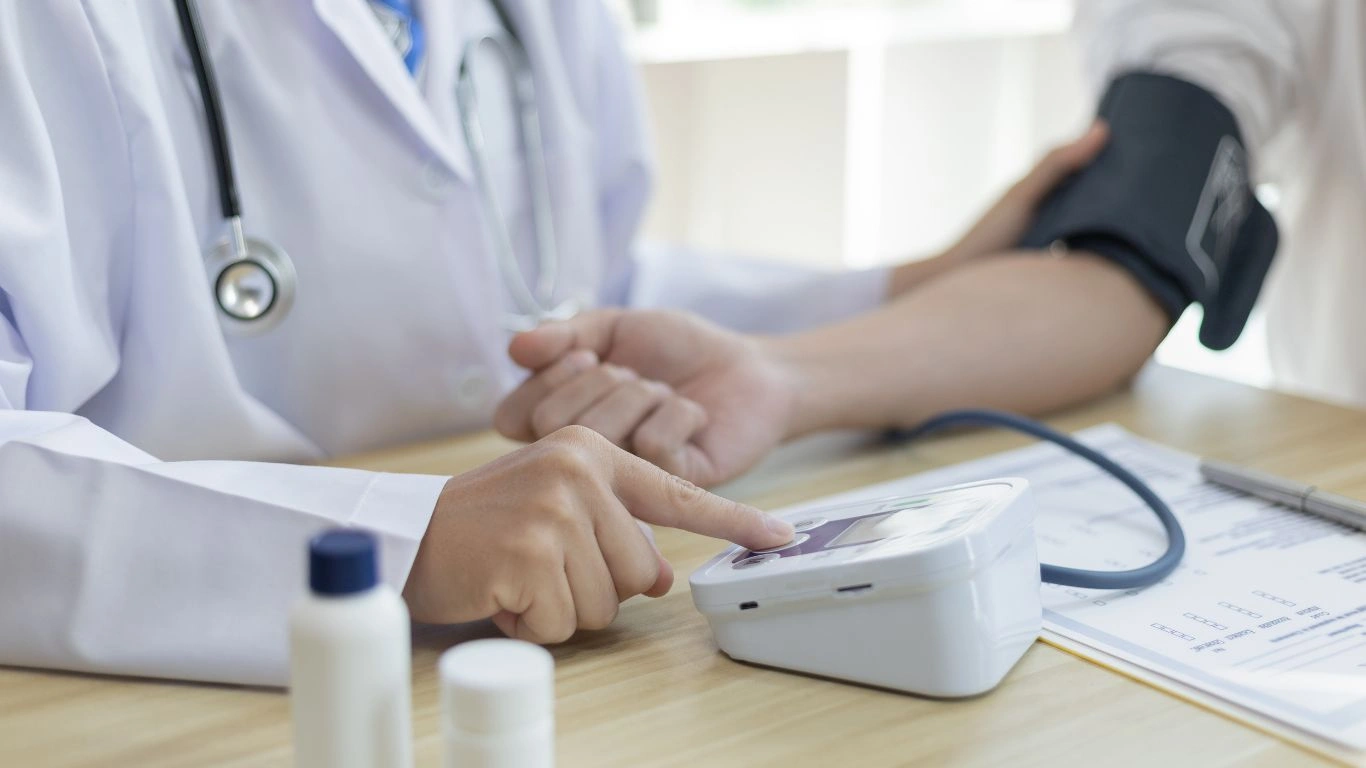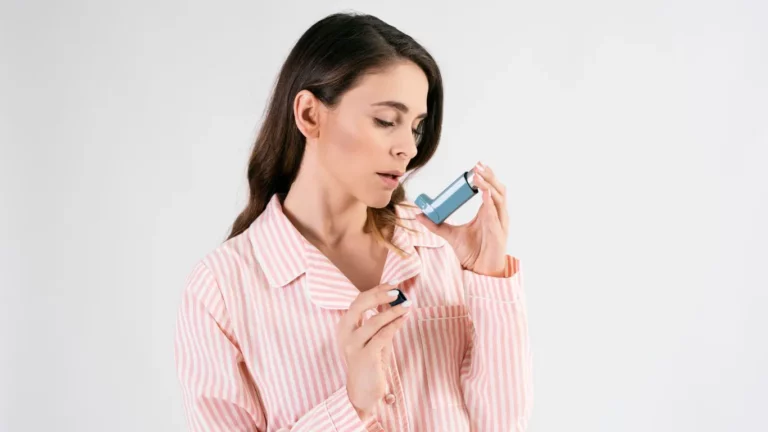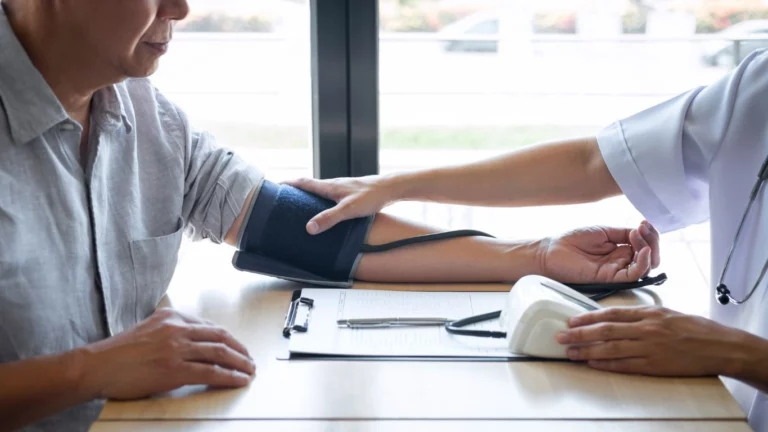Surprising Link Between High Blood Pressure and Vitamin K You Should Know
When it comes to managing high blood pressure, there’s the usual advice we all know by heart—watch the salt, get in your steps, lose a few pounds, maybe add a medication or two. But what if I told you there’s a lesser-known player in the blood pressure game that deserves more spotlight? Yep, I’m talking about the high blood pressure and vitamin K connection. As an internal medicine physician who’s spent years navigating the hypertension maze with patients, I’ve come to appreciate how nutrition—especially overlooked micronutrients—can change the whole picture.
How I Discovered the Vitamin K Puzzle in Hypertension

Let me rewind a bit. A few years back, I had a patient—let’s call her Laura—mid-50s, juggling multiple antihypertensives, doing everything “right,” yet her readings wouldn’t budge. We dug into her lifestyle, labs, stress levels—you name it. But something clicked when we reviewed her nutrient profile. Her vitamin K levels were way off.
That opened a rabbit hole I wasn’t expecting. I went on a mission: diving into clinical studies, attending nutrition panels, chatting with dietitians. And what I found was both fascinating and frustrating—vitamin K’s role in vascular health is more significant than many guidelines currently let on.
What Exactly Is Vitamin K Anyway?

So, here’s the quick refresher. Vitamin K isn’t just one thing—it’s a group of fat-soluble vitamins. You’ve got:
- Vitamin K1 (phylloquinone) – found in leafy greens like kale, spinach, and broccoli. This guy handles blood clotting.
- Vitamin K2 (menaquinones) – present in fermented foods like natto and animal products. This one’s more about calcium regulation and arterial health.
Now here’s the juicy part: Vitamin K2, especially, may help prevent calcium from depositing in your arteries. Why does that matter? Because stiff, calcified arteries = higher blood pressure. Think of it like plumbing—if your pipes are rigid and crusty, your water pressure spikes. Same deal in your blood vessels.
The Real-World Impact: High Blood Pressure and Vitamin K Connection
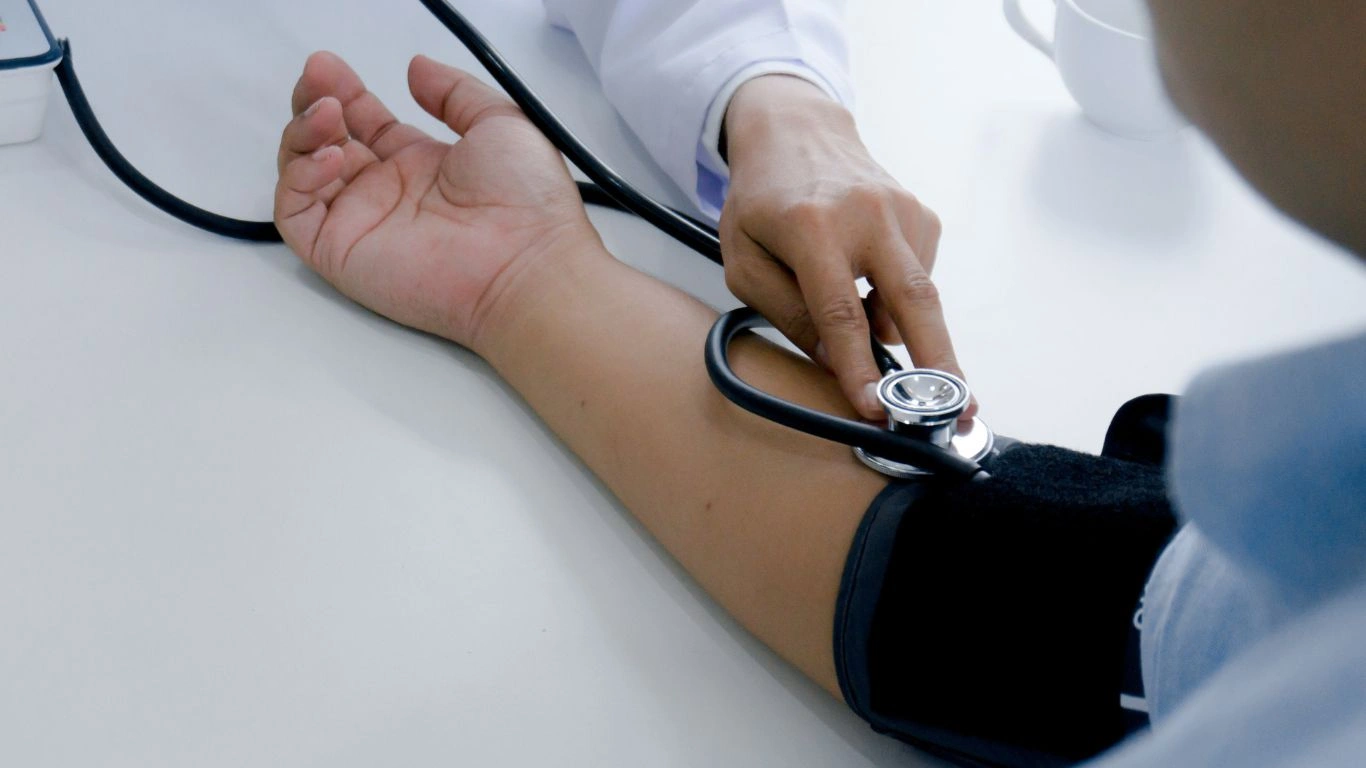
Let’s talk evidence. Over the past decade, more studies have been exploring the high blood pressure and vitamin K connection, and it’s becoming clearer that vitamin K2 may play a role in reducing arterial stiffness. Some key points:
- Arterial flexibility: K2 activates proteins like matrix Gla-protein (MGP), which helps keep calcium out of the arteries. That means smoother, more elastic vessels.
- Lower systolic readings: A few small-scale trials have shown that supplementing with K2 may lower systolic blood pressure, especially in people with pre-existing arterial calcification.
- Better endothelial function: That’s the inner lining of your blood vessels, and when it’s healthy, it helps regulate blood flow and pressure naturally.
I remember another patient of mine, George—an engineer in his early 60s, meticulous with his food logs and blood pressure tracking. We added a small daily dose of vitamin K2, and over six months, his systolic BP dropped by almost 10 points. Nothing else changed. Not diet, not meds, just that one tweak. Sure, anecdotal isn’t data, but this isn’t a one-off story.
But Wait—Should Everyone Load Up on Vitamin K?
Not so fast. I’m not suggesting we all run to the supplement aisle just yet. There are nuances here—especially if you’re on blood thinners like warfarin, which interact with vitamin K. This is where a knowledgeable provider (hello, that’s where we come in!) needs to personalize things. I always check labs, assess dietary intake, and weigh potential risks before recommending K2 supplements.
But if you’re not on anticoagulants and struggling with blood pressure control despite meds, clean eating, and all the right lifestyle moves, it might be time to take a closer look at your micronutrient status.
Everyday Sources of Vitamin K2
Most folks don’t get enough K2 from diet alone. That’s partly because many of us shy away from fermented foods or eat diets low in animal fats. Some naturally rich sources include:
- Natto (fermented soybeans) – crazy high in K2, though definitely an acquired taste!
- Grass-fed butter and cheeses – especially gouda and brie.
- Egg yolks and chicken thighs – simple, accessible choices.
Here’s a tip I give patients: pair those K-rich foods with healthy fats to boost absorption. Fat-soluble vitamins need fat to do their thing, after all.
Why the High Blood Pressure and Vitamin K Connection Is Still Overlooked

This still baffles me. With so much buzz around heart health, cholesterol, and lifestyle changes, why isn’t vitamin K2 mentioned more often when we talk about hypertension? One reason, I think, is that mainstream guidelines lag behind emerging research. The big clinical trials that influence national recommendations? They haven’t fully caught up to this yet.
Plus, there’s a lot of confusion between K1 and K2. People hear “vitamin K” and immediately think “clotting”—which, fair, because that’s what we were all taught in med school. But when you dig into the literature (and I mean really dig), you realize that K2 is doing a whole different job in the vascular system. It’s not just about clotting—it’s about keeping your arteries young.
Let’s Talk Mechanisms (But Keep It Simple)
Okay, let me nerd out for a sec—but in plain English, I promise. Vitamin K2’s magic happens through a process called carboxylation. It activates certain proteins like matrix Gla-protein (MGP) and osteocalcin. MGP’s main gig? Binding up calcium and keeping it from settling in your artery walls.
When you don’t have enough K2, these proteins stay inactive—like tools without batteries. Calcium gets dumped in the arteries, stiffening them, and voila: blood pressure creeps up. So, yeah, the high blood pressure and vitamin K connection is very real, even if it’s under the radar.
What the Research Is Starting to Say

While we’re still waiting on more large-scale trials, there’s some solid groundwork already laid out. A 2015 Dutch study found that higher dietary intake of vitamin K2—not K1—was associated with reduced arterial calcification and lower risk of coronary heart disease. Another small trial in postmenopausal women showed that K2 supplementation over three years improved arterial flexibility.
I bring this up not to throw a bunch of statistics at you, but because I’ve seen people perk up when I tell them there’s actual science behind these recommendations. It’s not just another wellness trend; there’s substance here. Clinical experience backs it, and so does emerging data.
Real-Life Wins: Patients Who’ve Benefited
I had this one gentleman, Miguel—mid-40s, construction worker, borderline hypertensive for years. Not a fan of pills (his words, not mine). We reviewed his diet, which was super low in K2. After easing in some K2-rich foods—plus a low-dose supplement—we saw a noticeable drop in both his systolic and diastolic readings over five months.
He still teases me at follow-ups, calls his natto “the stinky stuff,” but he swears by it now. Stories like his are why I dig deeper into the lesser-known players in blood pressure control. Not everything has to be another pill. Sometimes, it’s just about identifying gaps and filling them smartly.
Who Should Consider Monitoring Vitamin K?
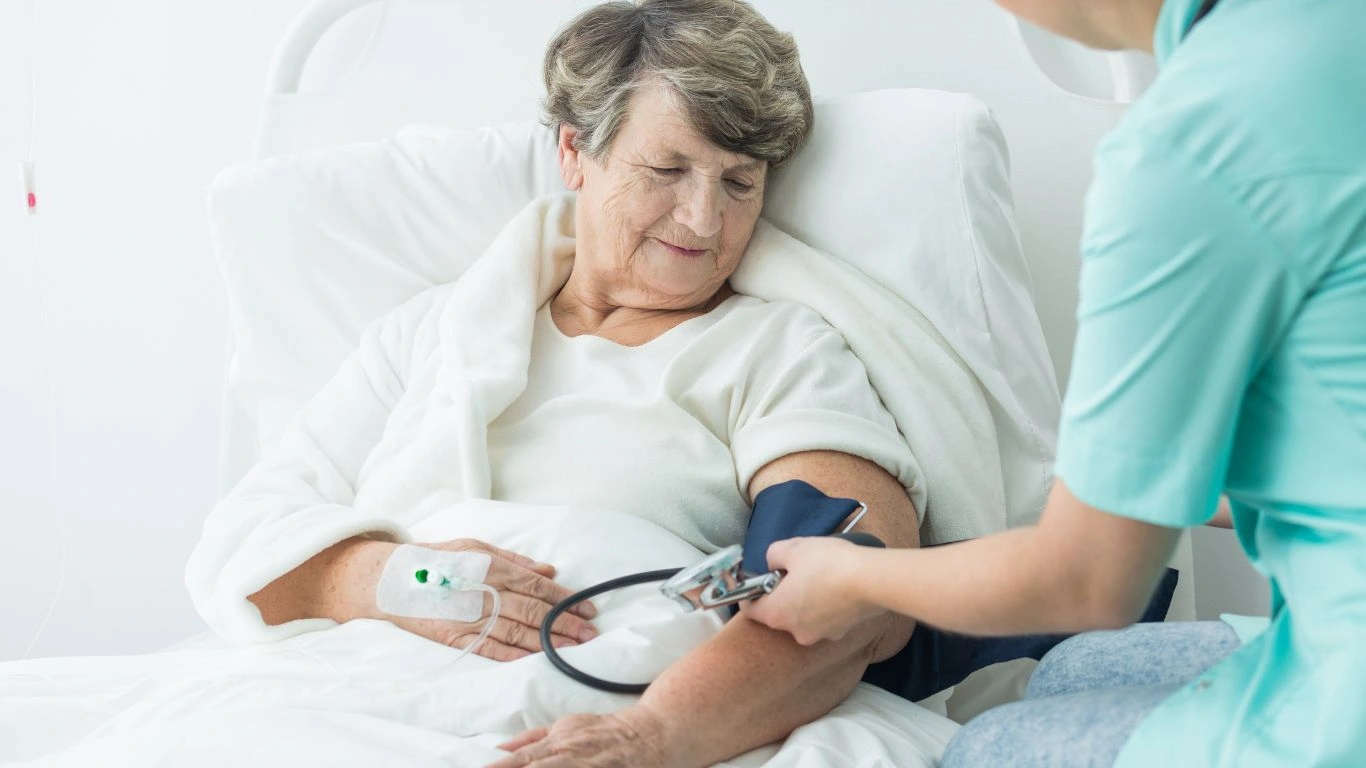
Let’s get practical for a sec. Not everyone needs to start tracking their K2 levels obsessively, but there are certain groups I keep a closer eye on:
- People on long-term antihypertensives – especially if their BP is still uncontrolled despite multiple meds.
- Postmenopausal women – due to increased risk of arterial calcification.
- Older adults with poor dietary variety – particularly if their meals lean heavily on processed or low-fat foods.
- Anyone with a family history of early heart disease or stiff arteries.
In those cases, I’ll usually order a functional test—like dp-ucMGP levels—to see how much inactive MGP is floating around. If it’s high, that’s a clue they might benefit from increasing K2 intake.
So, Should You Supplement?
Short answer? Maybe. Long answer? Depends on your diet, health status, and medication list. I’ve had patients do just fine by shifting their food choices: adding more egg yolks, brie, a few fermented items here and there. Others, especially with stubborn hypertension or early signs of calcification, have done better with targeted supplementation—usually in the range of 90–180 mcg/day of MK-7 (the most bioavailable form).
But please don’t start anything without running it by your doctor, especially if you’re taking blood thinners. It’s not about loading up on vitamins; it’s about getting the right kind, in the right amount, for the right person.
One More Thing: Don’t Forget the Synergy
Vitamin K2 doesn’t work in a vacuum. It plays well with others—especially vitamin D and magnesium. That trio is like the Avengers of vascular health. Vitamin D helps you absorb calcium, magnesium helps relax blood vessels, and K2 makes sure the calcium goes where it belongs. Balance is everything here.
So if you’re already supplementing with D3, and you’ve never thought about K2, now might be the time to reconsider. I’ve seen better BP outcomes when we address the full nutrient picture instead of piecemealing it.
Common Myths About Vitamin K and High Blood Pressure

By now, you can probably tell I’m a bit passionate about the high blood pressure and vitamin K connection. But let’s clear up some lingering confusion I hear from patients all the time—because this topic is clouded with half-truths.
Myth #1: Vitamin K just helps with clotting
This one’s understandable because it’s technically true—for K1. But K2 has a completely different, less-publicized job: regulating calcium and maintaining vascular flexibility. They’re cousins, not twins. It’s like comparing apples to apple pie—related, but not interchangeable.
Myth #2: If I eat leafy greens, I’m good
Again, mostly K1 there. While greens are absolutely fantastic for overall health, they’re not going to give you the K2 your arteries might be begging for. That’s why some folks eating “clean” still struggle with stiff arteries. It’s not always about eating more—sometimes it’s about eating smarter.
Myth #3: Supplements are dangerous for everyone on blood thinners
Here’s the nuance. If you’re on warfarin, yes, sudden spikes in vitamin K can affect your INR levels. But if you’re on newer anticoagulants (like apixaban or rivaroxaban), the interaction with vitamin K is much less significant. Bottom line? You shouldn’t guess. Always loop your provider into the conversation before starting anything new.
How to Actually Use Vitamin K2 for Blood Pressure Support

If you’ve read this far, you’re probably wondering: how do I actually put this into practice? Whether you’re a clinician reading this (hi colleagues 👋) or someone managing your own BP numbers, here’s how I guide folks through it in clinic:
Step 1: Start with Food First
You don’t always need a supplement. Some of my go-to K2 sources for patients include:
- Natto – rich in MK-7. I know, I know—it’s funky. But even a few bites here and there pack a punch.
- Egg yolks and hard cheeses – super doable, even in a busy lifestyle. Great for snacks or adding richness to meals.
- Liver and grass-fed meat – organ meats are a powerhouse of K2 (plus iron and B12).
Sometimes, we build a “K2-friendly” food week—just like meal prepping, but focused on nutrient density. Patients love the structure and usually feel better energy-wise too.
Step 2: Consider Supplementing with a Clinician’s Help
If we’ve done the food route and blood pressure is still stubborn, or if someone’s got signs of vascular calcification (based on imaging or labs), I’ll often suggest an MK-7 supplement. Dosing is typically in the 90–180 mcg range—small, but mighty.
One trick I share: take it with your fattiest meal of the day. It’s fat-soluble, so you’ll absorb way more that way. I’ve even had patients pair it with avocado toast or peanut butter smoothies—whatever works!
Step 3: Pair It with Other Heart-Friendly Nutrients
Remember what we said about synergy? Vitamin K2 works best with:
- Vitamin D3 – helps with calcium absorption and supports immunity.
- Magnesium – relaxes blood vessels and helps with over 300 body processes (seriously).
- Omega-3s – fight inflammation and support healthy arteries.
I’ve even had patients put together their own “heart stack”—with clinician guidance, of course. It’s amazing how much power there is in simple, evidence-based combinations.
What I Tell My Patients About the Long Game
Hypertension isn’t just about today’s reading—it’s about what kind of shape your arteries will be in 5, 10, 20 years from now. That’s where the vitamin K2 story shines. It’s not a quick fix. It’s a long-term investment in arterial health, bone health, and more.
Some patients find that message super empowering. It’s not about obsessing over numbers every day—it’s about building resilience over time. And when they see their BP improving after small changes? That’s when the trust builds. That’s when real lifestyle transformation starts to feel doable.
Final Word: Every Body is Different
One of the biggest lessons I’ve learned in this field is that personalization matters. What works for one patient may be totally ineffective—or even counterproductive—for someone else. That’s why I always encourage people to approach this with curiosity, not fear. Track what you eat. Monitor how you feel. Check in with a provider who actually listens.
Because sometimes, the missing piece isn’t more meds. It’s a little-known nutrient that just needed its chance to shine.
References
Disclaimer
This article is intended for informational and educational purposes only and does not substitute professional medical advice, diagnosis, or treatment. Always seek the advice of your physician or qualified healthcare provider with any questions you may have regarding a medical condition. Do not disregard professional medical advice or delay in seeking it because of something you have read here.

Dr. Gwenna Aazee is a board-certified Internal Medicine Physician with a special focus on hypertension management, chronic disease prevention, and patient education. With years of experience in both clinical practice and medical writing, she’s passionate about turning evidence-based medicine into accessible, actionable advice. Through her work at Healthusias.com, Dr. Aazee empowers readers to take charge of their health with confidence and clarity. Off the clock, she enjoys deep dives into nutrition research, long walks with her rescue pup, and simplifying medical jargon one article at a time.
